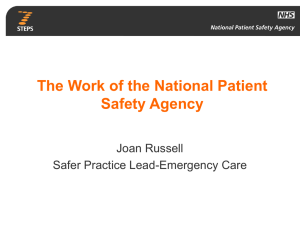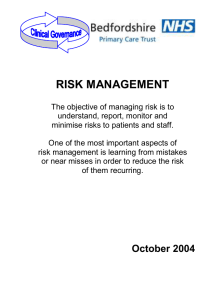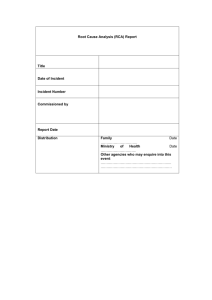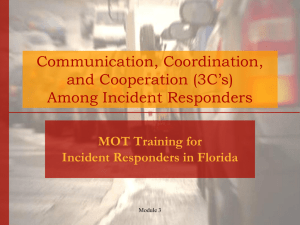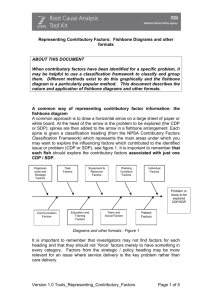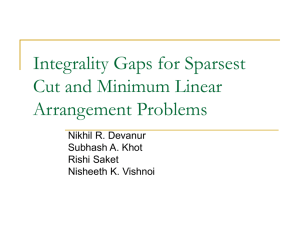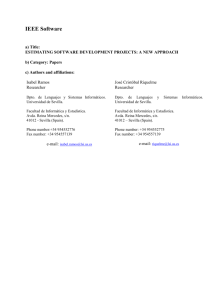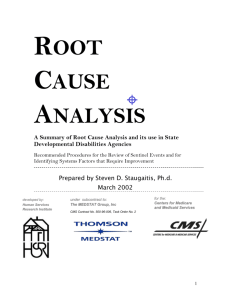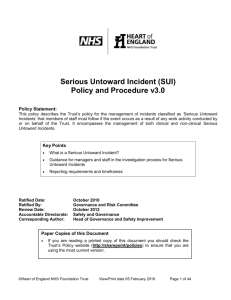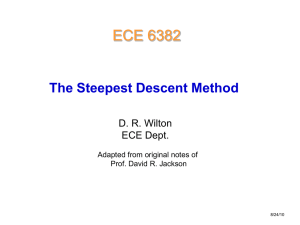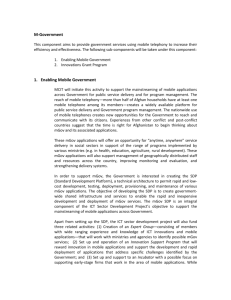Existing Staff - Royal College of Nursing
advertisement
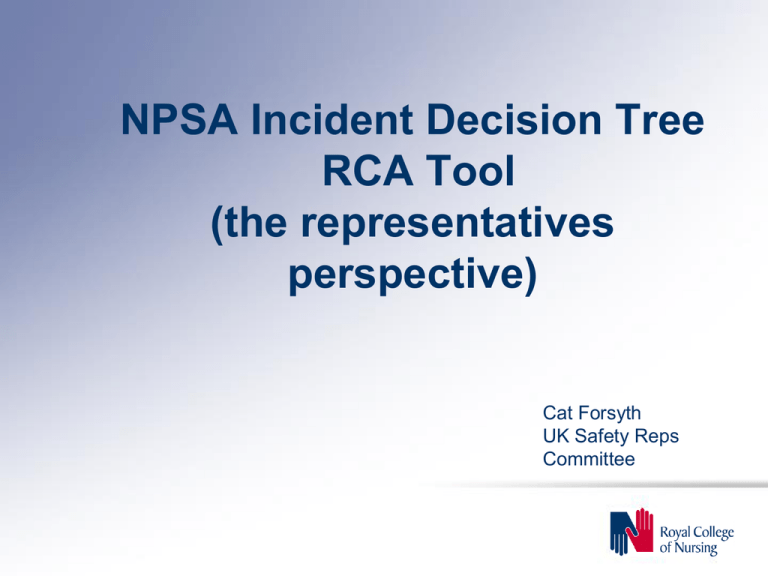
NPSA Incident Decision Tree RCA Tool (the representatives perspective) Cat Forsyth UK Safety Reps Committee Basic elements of a good RCA investigation WHAT happened HOW it happened WHY it happened Unsafe Act (CDP/SDP) Human Behaviour Contributory Factors Solution Development & Feedback Identifying the problem(s) Problems that arise in the process of care, usually actions or omissions by staff: Care Delivery Problem (CDP) i. care deviated beyond safe limits of practice and ii the deviation had a direct or indirect effect on the eventual adverse outcome for the patient Identifying the problem(s) cont’d Service Delivery Problem (SDP) SDP refers to those acts or omissions that are identified during the analysis of the patient safety incident, but are not associated with direct provision of care. They are generally associated with decisions, procedures and systems that are part of the whole process of service delivery. What is Human Error “We all make errors irrespective of how much training and experience we possess or how motivated we are to do it right. (in Reducing error and influencing behaviour - HSG48) Incident Contributory Factors •Patient factors •Individual factors •Task factors •Communication factors •Team & Social factors •Education & Training factors •Equipment and Resource factors •Working Condition factors •Organisational & management factors Types of Violation •Routine – involve regularly performed short-cuts between tasks, which are accepted locally, and sometimes by management. •e.g not checking identities of long term patients because they are well known Reasoned Violations- deviation from protocol where violation is for good reason •Reckless Violations- are deliberate deviations from protocol, usually harm not intended •Malicious Violations- are deliberate and include acts of sabotage Updating Staff / Feedback Staff should be kept updated on the progress of an investigation The chair and local manager should determine how best to provide feedback RCA Techniques Timeline •chronology event of what happened •Easy to understand data and inter-relations •Forms the backbone of the investigation Fishbone Analysis Contributory factors affecting the performance of individuals Five Whys –Best suited to non-complex problems –Each use of ‘Why?’ takes you closer to a root cause –Not compulsory to use five – stop when no further benefit is gained! Change Analysis –A comparative technique: what was the change that may have caused adverse event? –Enables you to compare a process when it is well defined and functioning effectively but then is found to not function well i.e. when performance problems have been identified Barrier Analysis –Human action barriers •Checking drug dosage before administering –Administrative barriers •Protocols and procedures, supervision, training –Physical barriers •Insulated pipes, lead lined aprons –Natural barriers of place and time •Isolation of MRSA patients The Incident Decision Tree •Developed by National Patient Safety Agency (NPSA), National Clinical Assessment Authority (NCAA), NHS Confederation, Royal Colleges and trade unions •Based on a model developed for the aviation industry •Aimed to support managers considering action following an incident and highlighting alternative to suspension “Here is Edward Bear,coming downstairs now, bump, bump, bump, on the back of his head, behind Christopher Robin. It is, as far as he knows, the only way of coming downstairs, but sometimes he feels that there really is another way, if only he could stop bumping for a moment and think of it” A.A. Milne 1926 Illustration E.H.Shepard 192614 http://www.msnpsa.nhs.uk/idt2/( jg0xno55baejor55uh1fvi25)/inde x.aspx GETTING THE BALANCE RIGHT CHANGING THE CULTURE MISSION IMPOSSIBLE SEE CLEARLY THE TASK AHEAD contact cat.forsyth@tgh.nhs.uk

